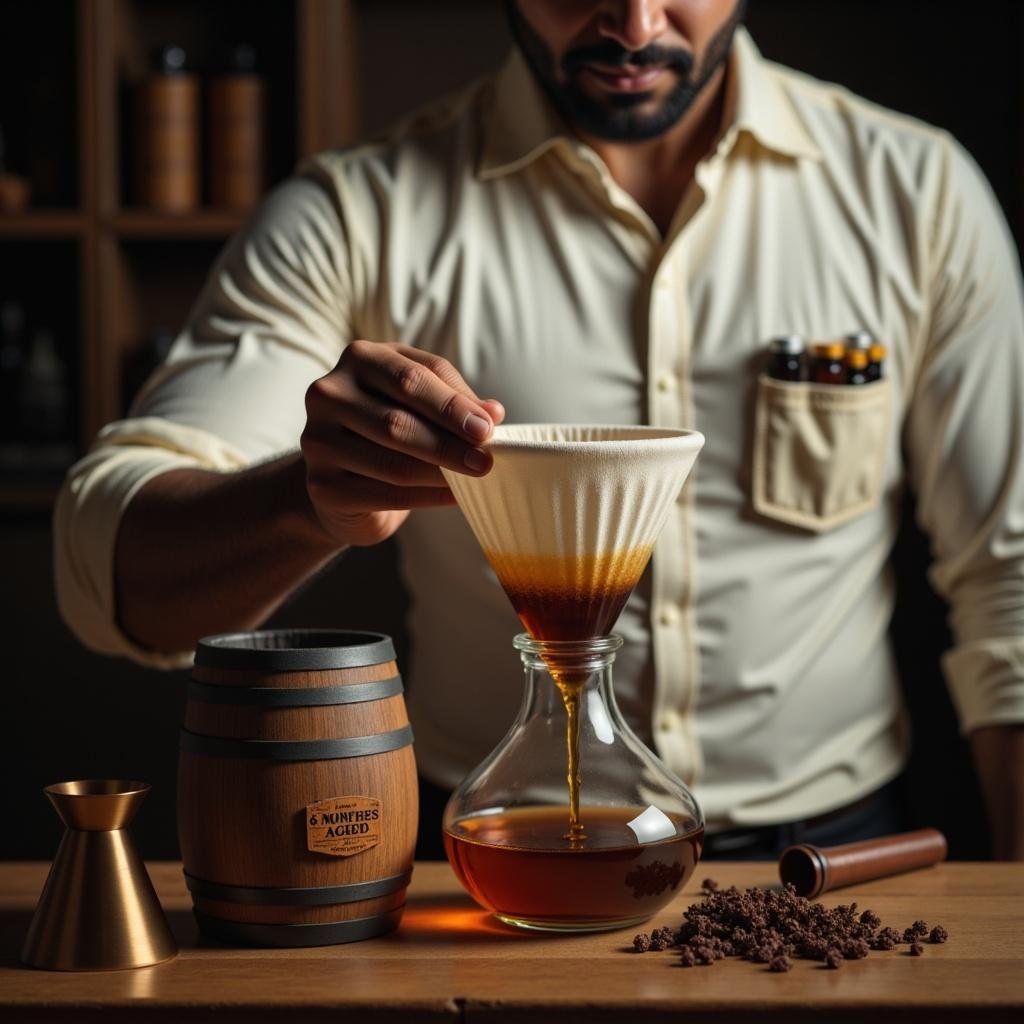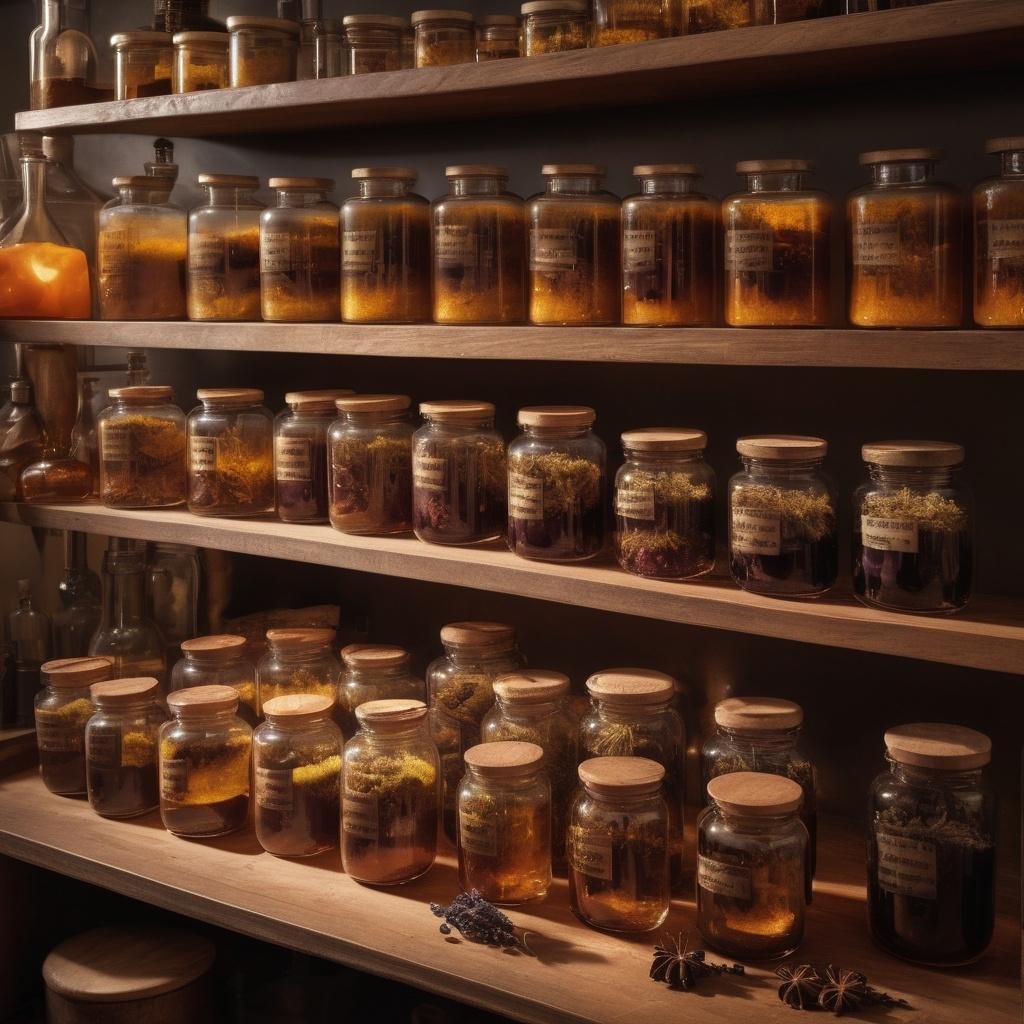
Introduction The realm of perfumes is both magical and diverse, and terms like artisan, niche, and designer pique curiosity. They are all meant to appeal to our olfactory senses, but they can vary quite a bit when it comes to philosophy, craftsmanship and overall attractiveness. That is the mysterious world of artisan perfumes, and how they differ from niche and designer perfumes. What Are Artisan Perfumes? Artisan perfumes embody the true spirit of perfumery – the creative, with independent perfumers mixing expertise, creativity and emotion in each bottle. These aren’t mass produced creations; they’re tailored, often with rare, natural ingredients, and intended to tell a personal story. Imagine opening a bottle and suddenly being transported to a memory, a place, a dream. It’s the secret of artisanal fragrances. They’re not just a scent; they’re an experience and a work of art. Here’s why they’re special: • Individualized Approach: Artisan perfumes convey the creativity and vision of the perfumer. • Small Batches: These are produced in small batches, focusing on quality rather than quantity. • Rare and Natural Ingredients: Often use rare, natural, and ethically sourced materials. * Little Marketing: These perfumes generally depend on word-of-mouth or grassroots promotion instead of glitzy ads. The first time I came across an artisan perfume, I remember. One was a pocket-sized bottle with a handwritten label, and when I sprayed it, I was immediately in a sun-soaked Mediterranean garden. The recollection being so intimate and vivid, I felt like I was having the perfumer’s memory as my own. What’s the Difference Between Artisan and Niche Perfumes? Though artisan and niche perfumes both emphasize individuality, they are actually pretty distinct. Artisan perfumes tend to be personal, built by one or just a few people. They value the perfumer’s vision and may contain mostly natural ingredients. On the other hand, niche perfumes tend to be made by dedicated perfume houses, larger-scale operations. Niche brands, though have creativity and exclusivity at their core, often have proper marketing campaigns and merge natural and synthetic ingredients for versatility. So basically, artisan perfumes are like letters from the perfumer to the buyer whereas niche perfumes feel like an art exhibition. What’s the Difference Between Artisan and Designer Perfumes? Designer perfumes are what you’d find in a luxury department store — fragrances made by the big fashion houses, such as Chanel, Gucci or Dior. These are designed to cater to the masses and often follow trends on the runways. Artisan perfumes, on the other hand, could not be less so. They’re for people who don’t want an “inoffensive” scent or something that matches an Instagram trend — they want something individual, intimate. Thus, artisan perfumers tend to use rare, high-quality ingredients, building their product slowly to make each scent perfect, while designer perfumes are mass-produced to meet global demand and focus more on a brand image than a perfumer’s story. Designer perfumes are the “ready-to-wear” of the fragrance world, chic and affordable. Artisan perfumes are more akin to bespoke tailoring — made to order, for mimicry and self-expression. The Reason to Buy Artisan Perfumes? For those who appreciate authenticity, creativity and connection, artisan perfumes deliver. Here’s why they’re special: 1. Unique Scents: You’re not likely to smell like someone else with artisan perfumes. Each of these creations is a one-of-a-kind masterpiece. 2. Emotional Connection: Many of these fragrances have a story or an inspiration behind them, so they are more than just a fragrance; they are a journey. 3. Sustainability: Many artisan perfumers focus on responsible sourcing and environmentally-friendly methods. 4. Transparency: Artisan brands are more likely to be transparent about their ingredients and processes, attracting conscious consumers. 5. Support Independent Creators: By choosing artisan perfumes over larger brands, you can support small businesses and passionate creators rather than billion dollar corporations. I find that my artisan perfume often generates conversation. ∞Why do people want to know the story about scent? It is — a nice way to connect with others and to express a little of your personality. Why Artisan Perfumes Are An Experience Imagine a smell — the smell of an ancient forest, a warm summer breeze, a spice market. Artisan perfumers are often copious note-takers when creating new fragrances — nothing less than a mood board in a bottle, designed to evoke emotions and create memories. Every bottle reflects the perfumer’s vision, often drawn from personal experiences, nature or cultural heritage. This gives wearing an artisan perfume a sense of specialness — it’s not just about smelling good; it’s about the feeling of connection with the story behind the scent. I once smelled an artisan perfume inspired by a perfumer’s childhood memories of her grandmother’s garden. The smell was a gorgeous mélange of roses, earth and sun warmed tomato leaves. It was so transporting that I could practically feel the summer sun on my skin and hear the bees humming among the flowers. Final Thoughts Artisan perfumes are a forge of creativity and individuality and the art of time. They’re meant for people who want more than just a nice smell; they want an element of the perfumer inside of them, a tale they can tote with them daily. If you’ve never dipped into artisan perfumes, now could be the perfect moment. Walk into this world of artisanal scents and find one that feels like it was crafted for you. “Perfume is a new dress, it makes you marvelous.” – Estée Lauder This quote is especially true with regard to artisan perfumes. These are not merely scents; they are art you wear that can change how you feel and present yourself. Why not give them a try? You may discover your new signature scent!

Have you ever spritzed on your favorite perfume, only to discover that you don’t smell it an hour later? Need not settle, your beloved perfume is not vanished into thin air. You’re encountering a little biological marvel known as olfactory fatigue, or nose blindness. So, we take the plunge into that lesser-known quirk of our sense of smell, and what it means for perfume lovers. What is Olfactory Fatigue? Olfactory fatigue is a temporary loss of sensitivity to a specific odor after continuous exposure to it. It’s not just perfumes like this; it’s part of the reason you no longer notice the scent of your home or car after some time. For those who love perfume, a little knowledge about this element can really elevate your scent game. Scent Science When you smell a new scent, olfactory receptors in your nose touch the aromatic molecules and relay signals to your brain. Your brain then interprets these signals as the fragrant (or, at times, less-than-fragrant) scent you experience. But because you retain the same perfume, your brain begins to ignore it. This attribute really had a functional purpose for our ancestors. It enabled them to register new and potentially dangerous smells in their environment without being bombarded 24/7 with known scents. Just imagine if you constantly breathed in everything around you – it would be overwhelming! Then what is olfactory fatigue and why does it happen with perfumes? Intensity and Complexity Perfume is a complex symphony for your nose. They are made up of top notes, heart notes and base notes that blend to form a harmonious of scents. Olfactory fatigue does not, however, spare them with all this complexity. Actually, perfumes can be really strong. One spray can infuse a room with scent. When your nose catches a whiff of this intense aroma, your mind first reacts with enthusiasm. But once the smell is introduced, your brain rapidly acclimates and begins to tune it out. Different from habituation and adaptation It is useful to distinguish between two related but slightly different concepts: habituation and adaptation. While either leads to a progressive drop in responsiveness over time, they’re not quite the same: • Habituation is more of a psychological phenomenon. It’s when a repeated exposure results in less of a response. * Adaptation It happens when the olfactory receptors themselves are affected so that they gradually become less responsive to a particular scent. With perfumes, you may undergo both of these processes. How Do You Fight Olfactory Fatigue? You may not be able to completely avoid olfactory fatigue, but there are ways to reduce the impact: Take Scent Breaks The easiest solution is to give your nose a break. If you are at a perfume store and testing out the different fragrances, smell one fragrance, then step outside to get some fresh air, or sniff something neutral like coffee beans. This resets your olfactory system. Rotate Your Scents If you own perfumes at home, consider alternating them if you’re a perfume enthusiast. Wearing different scents everyday keeps your nose engaged and avoids needlessness. Evaluate the Emotional Component Note that emotions can affect how we perceive smells. You might assign a longer shelf life in your perception to a fragrance associated with happier times. Conversely, odors linked with bad experiences may become intolerable more quickly. The Perfume Lover’s Guide to Overcoming Olfactory Fatigue Choosing Signature Scents Perfume enthusiasts often fantasize about discovering their “signature scent.” But olfactory fatigue can make it difficult to commit to a single scent. And instead of having one favorite, why not have a few, so you can choose between them? Study Your Scent Palate An awareness of olfactory fatigue may tempt you to try a wider variety of scents. If you usually lean toward floral fragrances, consider experimenting with woody or citrus-y notes instead. Adding variety to your perfume collection makes your nose feel contented. Note to Potential Perfumers If you are thinking about making perfumes, it is very important to know about olfactory fatigue. Take breaks often, and work in well-ventilated spaces to fully appreciate the complexities of the scents that you’re working with. Acceptance of the Quirks of Your Nose Instead of viewing olfactory fatigue as an aggravation, try to see it as an interesting feature of human biology. Understanding this quirk can help you appreciate your favorite scents even more: • Keep your fragrances in rotation • Test new perfumes slowly. • Take the opportunity to try different scents Ultimately, you want to enjoy what life has to offer as closely and richly sensory as possible. So go forth, sniff boldly, and delve into all the mysteries that amuse us all each day! Conclusion: Embrace Your Nose Blindness If you spray on your signature scent and a few hours later realize you can’t smell it at all, don’t panic. Your trusty nose isn’t broken; it’s just getting a well-earned rest. Olfactory fatigue is a natural and, in fact, helpful part of our sense of smell. Learn how to use this quirk of human biology to elevate your perfume game. So mix up your fragrances, take breaks when you need to, and don’t be afraid to branch out and try a new scent. Just remember, your nose is a busy, full time, functioning, important friend — it just needs a break once in a while! So, perfume lovers, go ahead and own your nose blindness. All those notes are part of the fun of scent exploration. Happy sniffing!

Introduction: The Essence of Tinctures in Perfumery Have you ever wondered about the secret behind those captivating, complex fragrances that linger in the air? The answer might surprise you: tinctures. These concentrated extracts play a crucial role in the world of perfumery, offering perfume lovers and creators alike a way to capture and preserve the essence of various natural materials. In this comprehensive guide, we’ll dive deep into the art of tincture making for perfume use, exploring techniques that will elevate your fragrance game to new heights. Whether you’re a seasoned perfume enthusiast or just beginning to explore the world of scents, understanding tinctures is key to appreciating and creating truly remarkable fragrances. So, let’s embark on this aromatic journey together and uncover the secrets of tincture making! Understanding Tinctures: The Basics What Exactly is a Tincture? At its core, a tincture is a concentrated liquid extract of plant or animal material. In the context of perfumery, tinctures are typically made by soaking aromatic substances in a solvent, usually alcohol, to extract their fragrant compounds. This process allows us to capture and preserve the essence of materials that might otherwise be difficult to work with in their raw form. The Role of Tinctures in Perfumery Tinctures serve several important functions in the world of fragrance: 1. Extraction: They allow us to capture scents from materials that don’t yield essential oils easily. 2. Preservation: Tinctures can help preserve delicate aromas that might otherwise degrade quickly. 3. Complexity: They add depth and nuance to perfume compositions. 4. Uniqueness: Tinctures enable perfumers to work with a wider range of materials, creating truly unique scents. Essential Materials for Tincture Making Before we dive into the techniques, let’s gather our supplies. Here’s what you’ll need to start making tinctures for perfumery: • High-proof alcohol (preferably 190 proof or 95% ABV) • Aromatic materials (flowers, herbs, resins, etc.) • Glass jars with tight-fitting lids • Cheesecloth or fine-mesh strainer • Dark glass bottles for storage • Labels and markers • A journal for record-keeping Pro Tip: Always opt for the highest quality ingredients you can find. The purity of your materials will directly impact the quality of your tinctures. Selecting Your Aromatic Materials The beauty of tincture making lies in its versatility. You can create tinctures from a wide variety of natural materials, including: Floral Materials • Rose petals • Jasmine flowers • Lavender buds • Orange blossoms Herbs and Leaves • Basil • Mint • Sage • Rosemary Woods and Resins • Sandalwood chips • Frankincense tears • Myrrh resin • Cedarwood shavings Animal-Derived Materials (for those comfortable using them) • Ambergris • Civet • Castoreum When selecting your materials, consider their aromatic profiles and how they might complement each other in your final perfume composition. The Art of Tincture Making: Step-by-Step Techniques Now that we’ve covered the basics, let’s explore the various techniques you can use to create tinctures for perfumery. 1. The Classic Maceration Method This is the most common and straightforward technique for making tinctures. 1. Prepare your material: Chop or crush your aromatic material to increase surface area. 2. Fill your jar: Place the material in a clean glass jar, filling it about halfway. 3. Add alcohol: Pour high-proof alcohol over the material until it’s completely covered. 4. Seal and store: Close the jar tightly and store it in a cool, dark place. 5. Agitate daily: Gently shake the jar once a day to encourage extraction. 6. Wait patiently: Allow the tincture to macerate for 2-6 weeks, depending on the material. 7. Strain: Pour the liquid through a cheesecloth or fine-mesh strainer to remove solids. 8. Bottle and label: Transfer the tincture to dark glass bottles and label with the material and date. 2. The Heat-Assisted Method For tougher materials or when you’re short on time, gentle heat can speed up the extraction process. 1. Follow steps 1-3 from the classic method. 2. Place the sealed jar in a slow cooker filled with water. 3. Heat on low for 24-48 hours, checking water levels periodically. 4. Allow to cool, then strain and bottle as in the classic method. Caution: Never apply direct heat to alcohol-based tinctures, as alcohol is highly flammable. 3. The Successive Batches Technique This method is ideal for extracting maximum aroma from precious or delicate materials. 1. Start with the classic maceration method. 2. After the initial maceration period, strain the liquid and set aside. 3. Add fresh alcohol to the same plant material and macerate again. 4. Repeat this process 3-4 times. 5. Combine all batches for a potent, complex tincture. 4. The Fractionation Method For advanced tincture makers, fractionation allows you to separate different aromatic components. 1. Create a tincture using the classic method. 2. Chill the tincture in the freezer until some components solidify. 3. Quickly strain the liquid, separating the solid and liquid fractions. 4. Each fraction will have a different scent profile, allowing for more nuanced perfume creation. Fine-Tuning Your Tinctures Creating the perfect tincture is as much an art as it is a science. Here are some tips to help you refine your technique: Adjusting Alcohol Strength While high-proof alcohol is ideal for most tinctures, some materials benefit from a slightly lower alcohol content. Experiment with diluting your alcohol with distilled water to find the perfect balance for each material. Balancing Maceration Time The ideal maceration time varies depending on the material: • Delicate flowers: 1-2 weeks • Herbs and leaves: 2-4 weeks • Woods and resins: 4-6 weeks or longer Trust your nose – when the scent reaches its peak, it’s time to strain. Blending Tinctures Once you’ve created several single-note tinctures, try blending them to create complex, layered scents. Start with small amounts and keep detailed notes of your combinations. Troubleshooting Common Tincture Issues Even experienced tincture makers encounter challenges. Here are some common issues and how to address them: Weak Aroma • Use a higher ratio of plant material to alcohol • Increase maceration time • Try the




 United States
United States India
India UAE
UAE